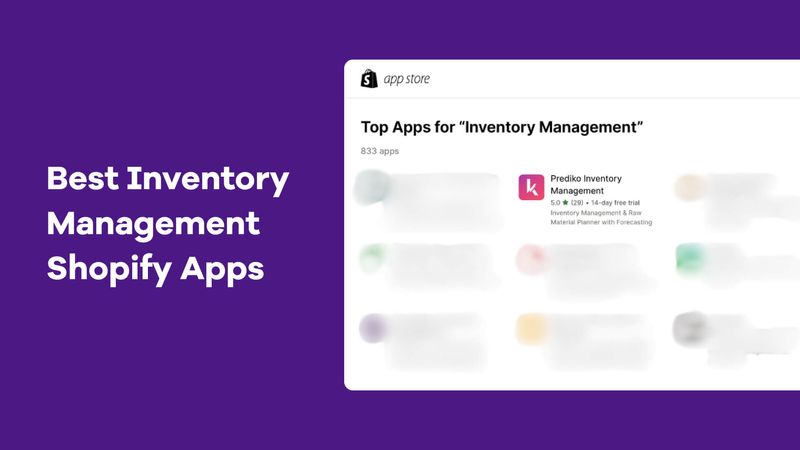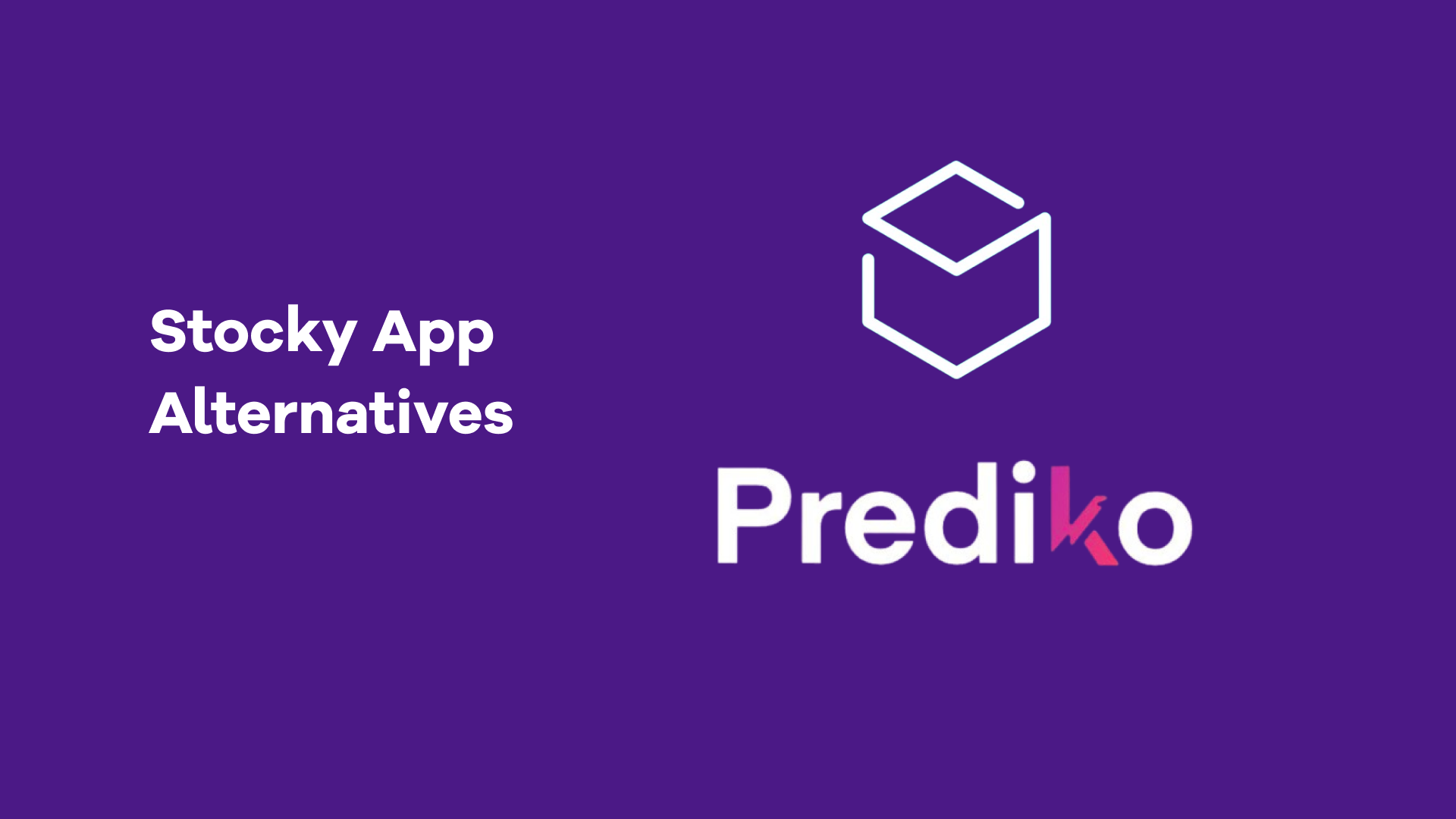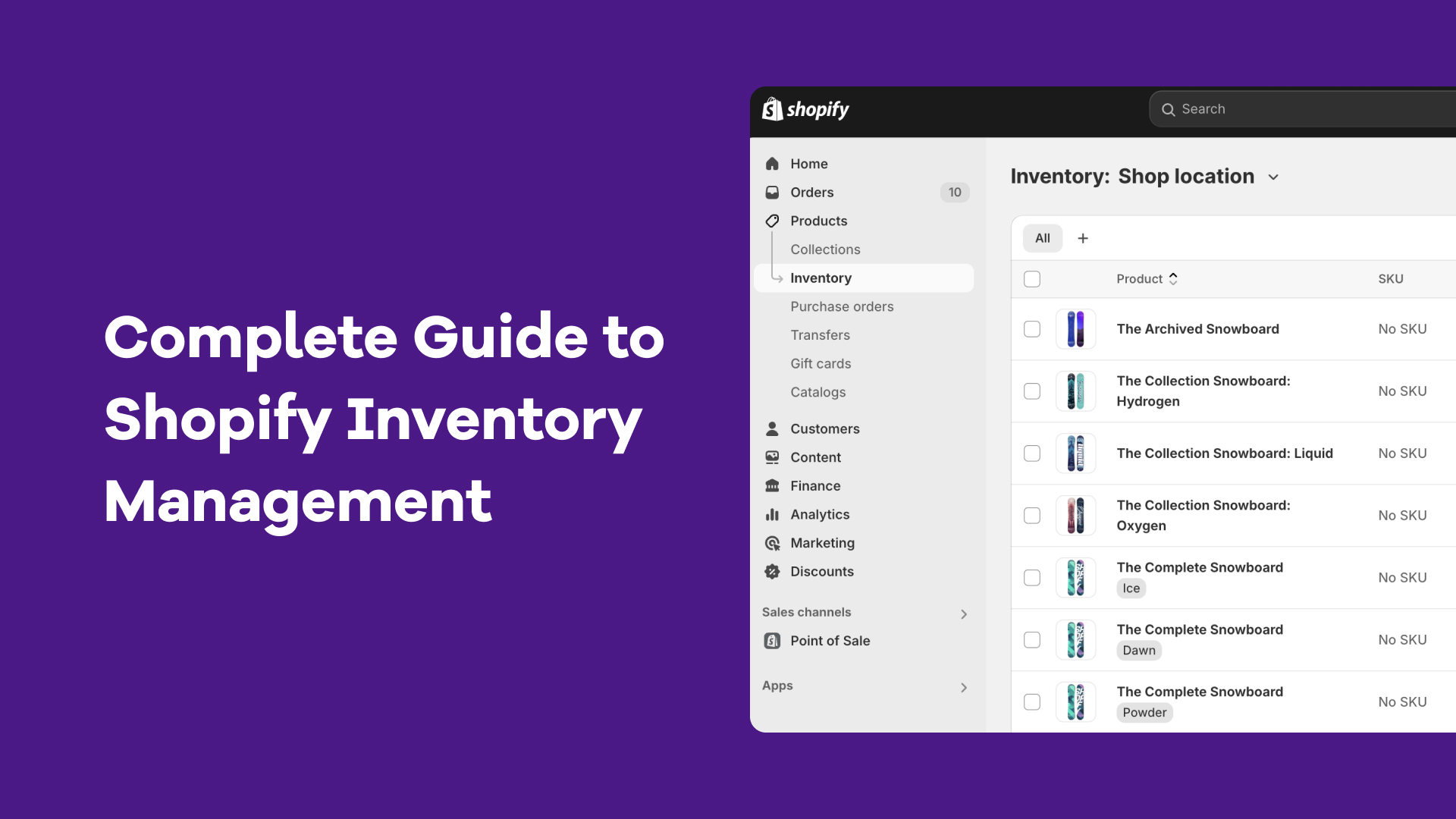What’s the right time to open a new store on Shopify?
It’s one of the most discussed questions in the ecosystem, and for good reason.
As your brand grows, so does the complexity. More products, new regions to cater, changing customer expectations. At some point, a single Shopify store stops being enough.
Managing everything under one storefront might’ve worked in the early days. But now you need more flexibility, more control, and a structure built for scale.
This guide breaks down why brands opt for Shopify multiple storefronts, how to run them efficiently, the challenges you’ll face, and the hacks to solve them.
Why Multi-Store Setups Work for Growing Brands
Multiple storefronts give you more control, flexibility, and room to scale.
Here are some reasons why they make sense for growing brands.
1. Targeted customer experience
Every region has a different customer base. Expectations, shopping habits, and fashion trends change from place to place. To connect with each audience, you need to create the experience around them, and that’s where separate Shopify stores come in.
By creating individual stores for different markets, you can customize product ranges, sizing, currency, homepages, and promotions.
Allbirds is a good example of this. Their European and Canadian storefronts both run on Shopify but have different homepage content specific to each region.
On the Canadian site, the homepage prioritizes weather-resistant styles like Wool Runner Mizzles, reflecting Canada’s colder, wetter climates in many regions.

Meanwhile, the EU site lean towards lighter, breathable options like Tree Runners, suited to milder European spring weather in April.

This makes each store feel more intentional and relevant to the shopper.
2. Brand differentiation
When a business has multiple product lines or targets very different audiences, merging everything into one store can blur the message. Each brand has its own voice, visual style, and identity, and forcing them to coexist in the same space can confuse customers.
By setting up separate Shopify stores, each brand or sub-brand gets room to stand on its own. You can modify the design, messaging, price range, and products to match the brand’s unique positioning without interference from other lines.
Amazon is a strong example of this. It runs distinct brands like Amazon Prime, Amazon Web Services (AWS), and Amazon’s marketplace, each targeting a completely different audience with its own positioning.
Prime focuses on consumer convenience and entertainment, AWS serves enterprise-level tech buyers, and the core marketplace targets everyday shoppers. Each brand has its own messaging, tone, and customer journey.
Separate storefronts and digital identities allow Amazon to communicate clearly with each audience, without overlap or confusion. For Shopify brands selling on Amazon, this kind of channel separation is only effective if supported by seamless Shopify Amazon inventory sync , which ensures accurate stock levels across all storefronts and marketplaces.
3. Improved localization
Selling in different regions of the world isn’t just about translating text or converting prices.
People in each country, and even within regions of the same country, have different expectations when it comes to sizing, payment options, shipping speeds, and even how products are described.
Trying to manage all of that through one store can limit how relevant your brand feels to each customer.
You can adapt language and terminology (sneakers vs. trainers), offer local shipping methods like USPS or FedEx for U.S. buyers, set regional pricing, and create promotions tied to local holidays or events.
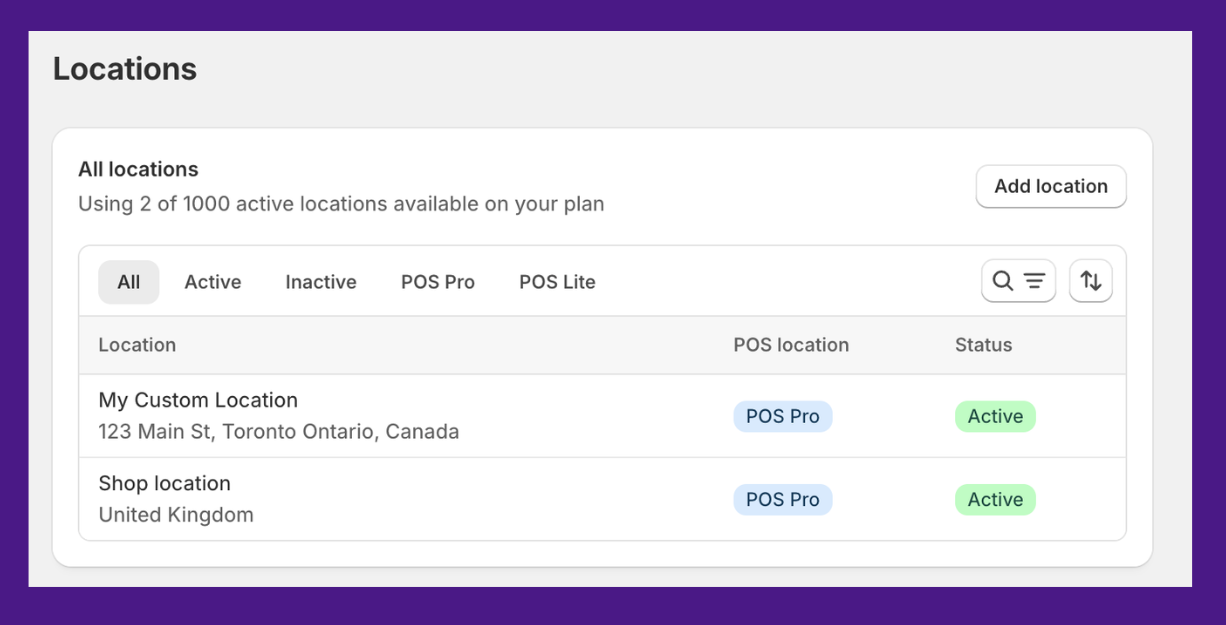
Even something as small as using imperial measurements in the U.S. vs. metrics elsewhere can make a difference in how trustworthy and professional your brand feels.
4. High-impact marketing strategies
Marketing is dynamic. What grabs attention in one country, or even one state, might fall flat in another.
Different audiences respond to different promotion platforms, messaging, product imagery, and even timing. With separate Shopify stores, you can build each store’s marketing strategy around its unique audience, without worrying about conflicting campaigns or mixed signals.
You can run email campaigns with different tones, A/B test landing pages based on local behavior, and even sync store-specific data with regionally focused ad platforms.
Visuals play a big role in regional engagement. Instead of investing heavily in separate photo shoots for every location, many brands explore cost-effective alternatives to traditional product photography that allow for quick creation of product imagery to suit local tastes, cultural nuances, and audience expectations.
A good example is Gymshark. Their French storefront banner markets new workout drops in local language, catering to everyday fitness needs.
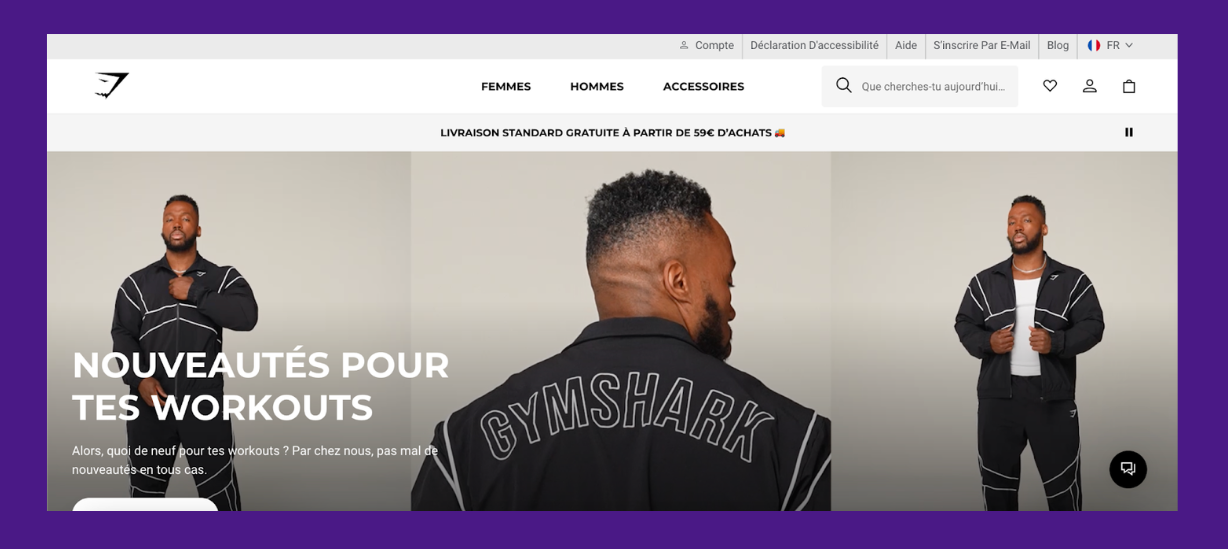
Meanwhile, the UAE homepage promotes a culturally relevant Eid campaign “Strength in Eid,” showcasing modest activewear and dedicated delivery timelines for the holiday.
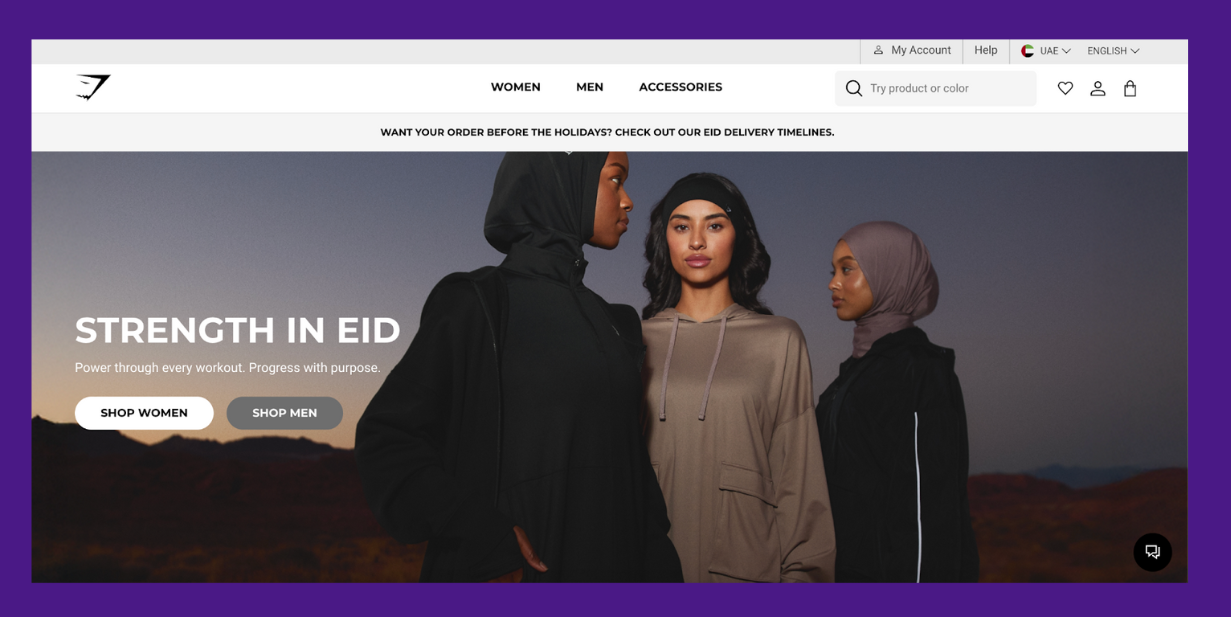
By marketing products as per region on the hero banner, Gymshark allows each shopper to see what’s most relevant to them, at the right time and in the right context.
Two Ways to Run Shopify Multiple Storefronts
Can you have more than one store on Shopify?
Well, we will answer this and more in this section.
If you're looking to manage more than one store on Shopify, there are two main ways to do it, each with its own process and use case.
1. Separate Shopify accounts
Each store runs on its own Shopify account. That means you get an individual dashboard, domain, backend, theme, and apps for every store.
You’re basically building each store from scratch. This setup gives you full control over customization and is available on any Shopify plan.
2. Multiple storefronts under a single Shopify Plus account
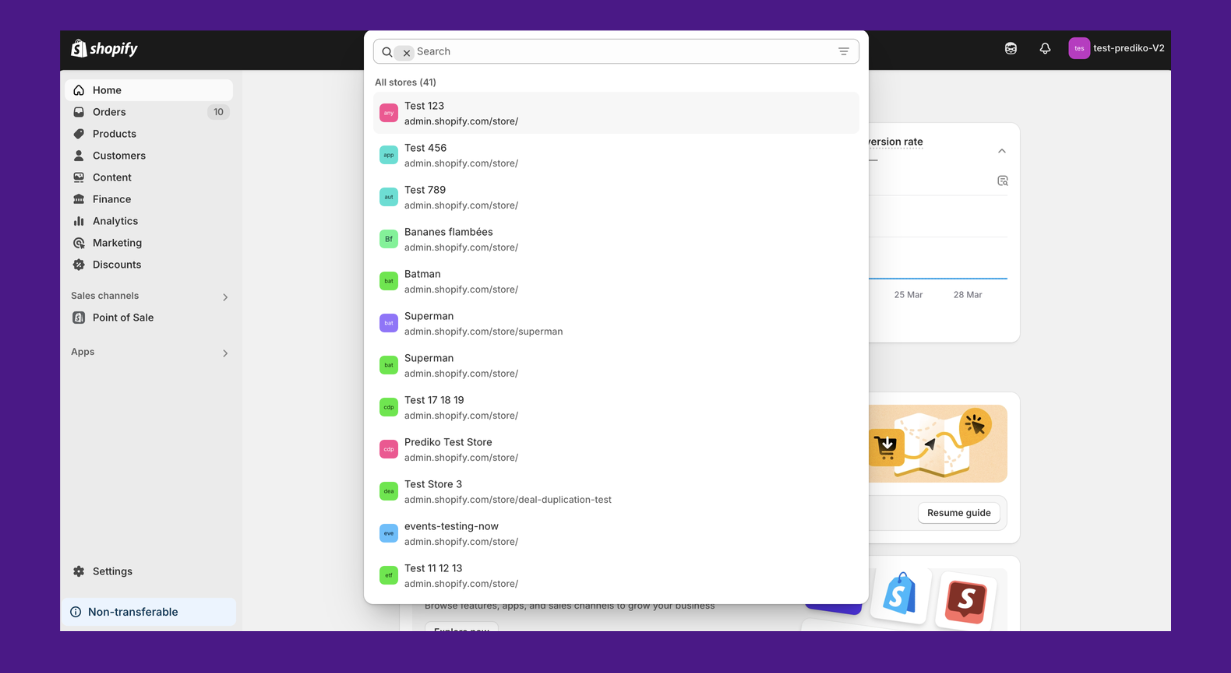
This is only available if you're on Shopify Plus.
You may be wondering, how many Shopify stores can I have now? With this option, you can manage up to 10 storefronts under one account.
It’s all connected to the same backend, so things like inventory, customer data, and analytics can be centralized while still offering separate storefronts for different regions, brands, or experiences.
We will now compare both of these ways across different aspects
Best Practices for Managing Shopify Storefronts
To keep multi-store operations running smoothly, you need good tools and processes. These best practices will help you stay organized, avoid duplication, and scale with clarity:
1. Establish standard operating procedures (SOPs)
Running multiple Shopify stores means repeating a lot of the same tasks, publishing product pages, launching campaigns, and updating seasonal banners. Without clear SOPs, this can lead to inconsistencies that confuse both your team and your customers.
For example, if a U.S. store follows one naming convention for sizes or products, while a Canadian store follows another, it turns inventory tracking and customer support into chaos.
One way to prevent this is by building SOPs using the RACI (Responsible, Accountable, Consulted, Informed) model. It helps define who’s responsible, accountable, consulted, and informed for every key task. Teams across different stores know exactly what’s expected—no overlap, no confusion.
For example, during a new product launch:
- The U.S. content lead is Responsible for writing product copy
- The global brand manager is Accountable for final approval
- Regional marketing teams are Consulted for localization input
- Customer support is Informed so they can prep FAQs and responses
This kind of clarity keeps launches and other operations consistent, even across five different storefronts.
2. Centralize inventory and order tracking
Suppose your best seller runs out in Store A, but it’s sitting untouched in Store B. Your ads are still running, people are adding it to the cart, and you’ve got zero visibility until complaints hit support.
This becomes a common problem when inventory and orders across stores are managed in silos. A multi-store inventory management and planning tool like Prediko changes that.
Prediko is an AI-powered inventory platform, purpose-built for Shopify, enabling brands to manage multiple storefronts. It helps you plan and track inventory for both raw materials and finished goods, all in one place.
It uses AI trained on 25 Million SKUs to forecast demand using historical sales data, seasonality, and market trends. Based on that, it sends real-time replenishment alerts so you always have the right stock in the right store.
Prediko goes beyond inventory by helping you manage purchase orders, production planning, and supply chain operations across all your stores.
Its features include
- AI Demand Planning: Its AI digs into your historical sales and seasonality across all storefronts to predict demand per SKU, category, or location. This means you’re not guessing what each store needs but have data telling you what’s hot and what’s not.

- Multi-Store Syncing: Prediko lets you track stock across multiple warehouses or storefronts in real-time via Shopify, all in one app. No hopping between dashboards and you always know what’s where.
- Purchase Order Management: Easily create, manage, and track POs for all your storefronts based on their sales and inventory, straight from Prediko’s buying table. Get alerts for what to reorder, how much, and when, so you always have enough.
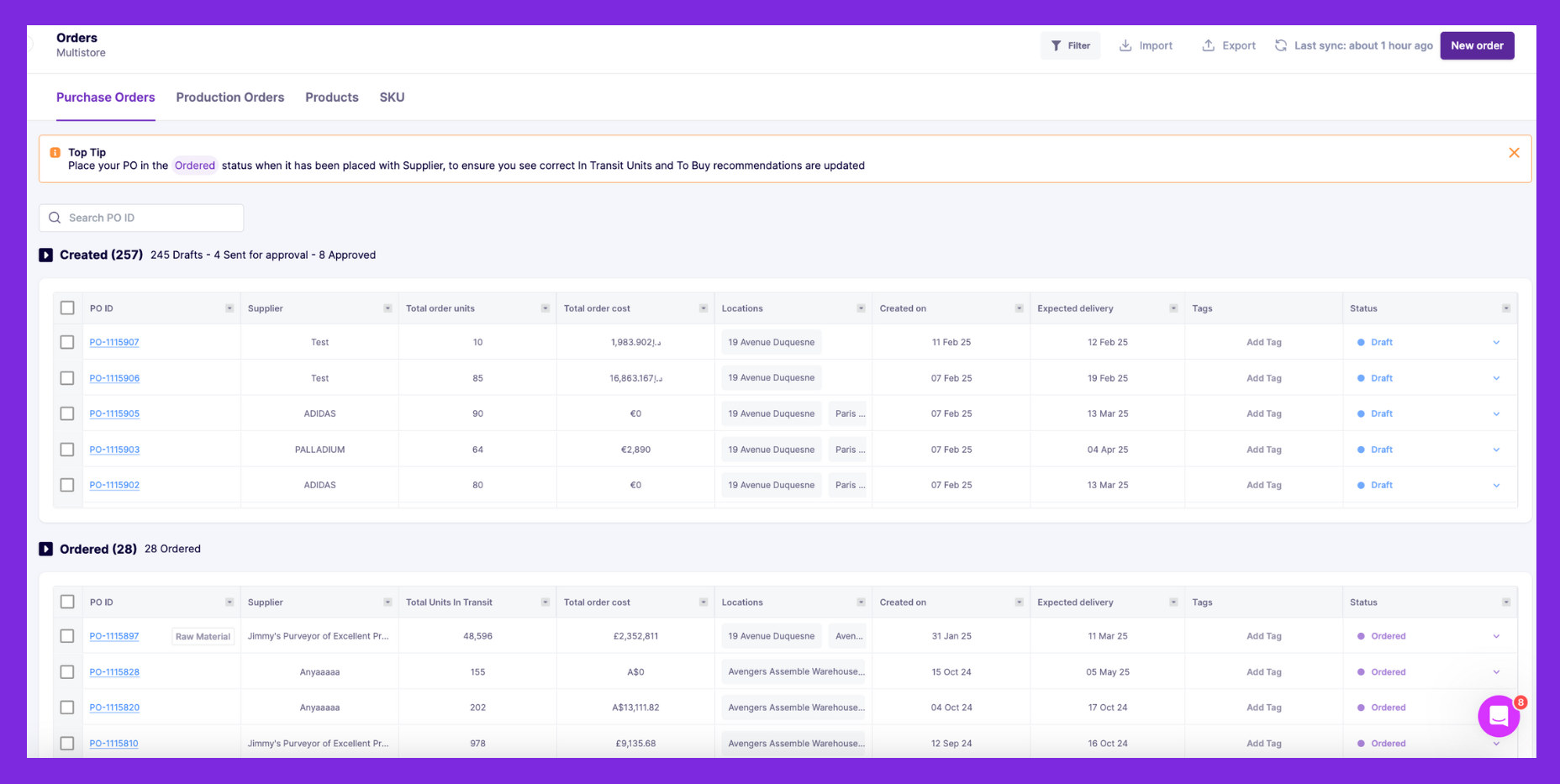
- Analytics & Reports: Monitor real-time metrics like inventory levels, PO status, sell-through rates, and sales performance by store, category, or whatever. Get automated ‘at-risk’ and ‘out-of-stock’ alerts to act before it’s too late.

- Raw Materials Management: Track and forecast raw material requirements for each store in a unified way and link it to finished goods demand.
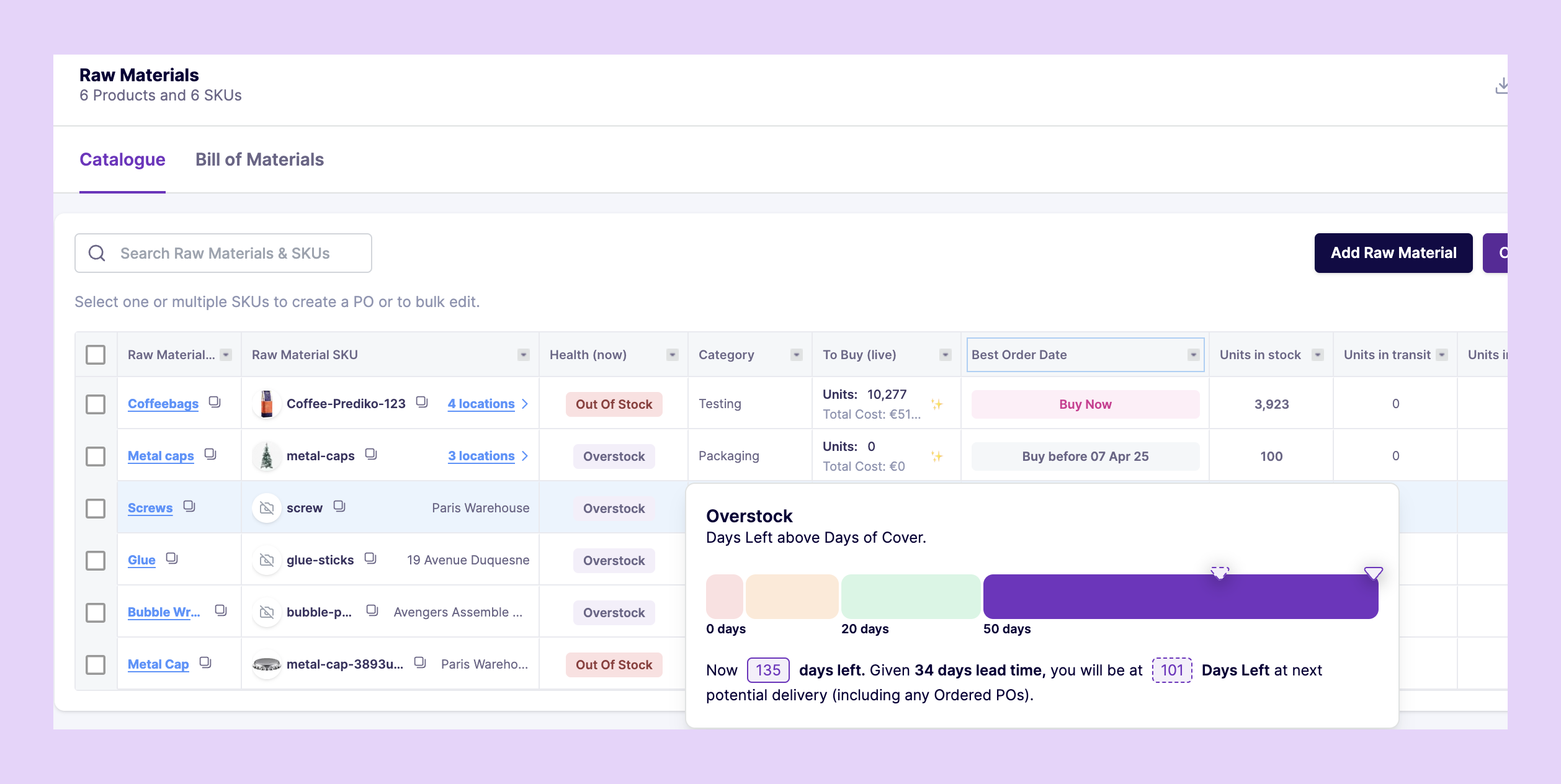
Simply put, Prediko becomes the brain that ties all your Shopify stores together, helping you stay in control of your inventory, even when you're managing five different storefronts in five different regions.
3. Allocate resources strategically
Picture this: your U.S. store is pulling 70% of total sales, but your team spends just as much time optimizing a low-traffic store in New Zealand. Feels off, right?
You need to allocate your resources strategically. That’s where the BCG matrix can help, a framework that helps you prioritize where your time, team, and budget are invested. It splits your storefronts into four categories based on performance and growth potential.
1. Stars: High growth, high revenue
These stores are scaling fast and showing strong ROI. Double down here with paid acquisition, localized marketing, UX testing, and even expansion of SKUs. This is where you innovate and push hard.
2. Cash Cows: Low growth, high revenue
Mature stores that consistently generate revenue without needing much extra investment. Automate what you can, email flows, fulfillment, inventory restocks, and redirect live resources to Stars.
3. Question Marks: High growth potential, low current revenue
These are test-market stores or new region launches. Use lightweight strategies like pre-built templates, influencer marketing, and small-scale paid campaigns. Measure early traction before scaling spend.
4. Dogs: Low growth, low revenue
These are the stores you monitor but don't actively invest in. They might exist to support brand presence or legacy markets, but you keep costs low and automate everything possible.
By treating each storefront based on what the data tells you, not just gut feeling, you’ll avoid wasting efforts and achieve faster growth.
4. Monitor performance separately
Bundling all your analytics into one dashboard hides the details that actually matter. Each storefront serves a different market, with different behaviors, devices, and buying triggers, so performance should never be measured as one average.
Treat every store like a standalone ecommerce funnel. Break down KPIs per storefront:
- What’s the bounce rate on mobile vs. desktop in your Canada store?
- Does the U.S. store respond better to bundle offers or limited-time discounts?
- Is your EU store lagging because of payment options or delivery times?
Challenges in Managing Shopify Multiple Storefronts (+Solutions)
Below are some of the biggest friction points brands come across when managing multiple stores on Shopify and how to solve them.
1. Logistical and operational challenges
Managing inventory, fulfillment, shipping, taxes, and product data across multiple stores on Shopify can create major friction. Without alignment, processes fall apart, leading to overselling, delays, or incorrect product listings.
Solution
Centralize inventory and fulfillment. Use third-party apps like Prediko for unified stock visibility, automate order routing, and apply standardized product naming conventions across all stores. Build internal SOPs so that operations can scale easily as more stores are added.
2. Communication across teams
Multiple storefronts usually mean multiple teams, or at least multiple workflows. When those teams aren’t aligned, product launches, promotion campaigns, and branding can easily go off track.
Solution
Centralize your communication and keep everyone in the loop. Use tools like Slack or Microsoft Teams to create channels for each store or function, so updates hit everyone instantly.
Have cross-store calendars, define roles clearly, and document all marketing and merchandising workflows. Maintain a single source of truth for brand guidelines and product data to avoid duplication or miscommunication.
3. Handling customer service and support for multiple stores
With different stores come different policies, time zones, languages, and support expectations. Juggling tickets across platforms leads to delays, and offering inconsistent service damages customer trust.
Solution
Pull customer queries from all stores into one place, allowing support teams to see the full picture without hopping between accounts.
Consolidate support into a single helpdesk platform like Gorgias. Set up store-specific templates, workflows, and automation rules. Assign tickets based on region or store to ensure responses are relevant and accurate but managed centrally.
What’s Next for Shopify Multi-Store Management
E-commerce is moving fast, and so is the way brands manage multiple storefronts. Here’s what’s coming next.
1. Centralized multi-store management with Shopify's 'Organizations' feature
Shopify has introduced the 'Organizations' feature, available exclusively to Shopify Plus merchants, allowing them to manage multiple Shopify stores created instead of logging into each store separately.
This centralized approach simplifies operations by providing a unified dashboard for billing, user permissions, and store settings, simplifying the management of multiple storefronts.
2. AI-driven personalization and automation
AI is making things easy for Shopify merchants as well, allowing them to automate tasks and personalize customer experiences.
Shopify's AI suite, 'Shopify Magic,' helps merchants generate emails, product descriptions, and FAQs and edit product images, tasks previously requiring a lot of manual effort. This addition has made running and scaling your Shopify stores efficient.
Shopify is also expanding availability of Shopify Flow to allow merchants to create custom workflows that trigger actions based on store events, automating repetitive tasks.
3. Global expansion with Shopify Markets
Shopify Markets helps merchants manage international, retail, and B2B markets from a centralized interface, offering capabilities similar to those available on Shopify Plus.
With Markets, you can localize shopping experiences by customizing languages, currencies, domains, and product availability for each region. This allows merchants to serve global audiences while maintaining consistency across markets.
Unlike Shopify Plus multi-stores, which provide fully independent storefronts with separate admins and checkouts, Markets operates within a single store, limiting flexibility but simplifying management.
The ability to consolidate multiple stores into one using Markets, as some merchants are already doing, suggests a future where multi-store management becomes less about separate entities and more about unified, flexible storefronts for specific audiences.
Handling Inventory Across Shopify Multiple Storefronts? Invest in Prediko
Managing multiple Shopify stores opens up massive growth opportunities, but it also adds complexity. One of the biggest risks? Inventory mismanagement. Stockouts, over-ordering, and missed reorders can slow down even the best-planned expansion.
When your inventory is under control, everything else runs smoother. You can focus on building stronger customer experiences, launching new products, and scaling into new markets/regions.
Prediko is built to support exactly this. It integrates with Shopify multiple storefronts, giving you one place to track inventory, forecast demand, and automate reordering so that none of your stores are ever overstocked or out of stock.
Try Prediko free for 14 days and get the control you need to grow with confidence.



.avif)



